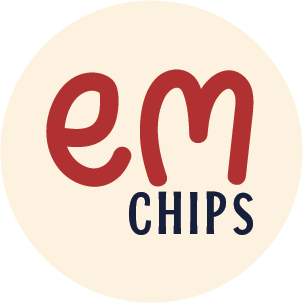
Top Red Flags in any snack
Adrianna NehmeShare
If you care about what goes into your body, it is important to understand what you are eating. However, not all food products make this easy, especially with buzzwords that appear to be “healthy” or, on the other end of the spectrum, chemical ingredients that even a spelling bee champion might struggle to pronounce. Here are some red flags to watch for when you go to the grocery store to pick up your next snack.
 Unrecognizable ingredients
Unrecognizable ingredients
Try pronouncing maltodextrin, tertiary butylhydroquinone, or monosodium glutamate. The last one is not that hard, but the point still stands. If you cannot pronounce it, cannot visualize it, and it sounds like a villain from a science fiction novel set on another planet, it probably does not belong in your snack. Instead, try to seek out snacks made from real, recognizable ingredients that you can find in your refrigerator rather than on a television screen. On the plus side, you won’t have to spend years of your life earning a chemistry degree to understand what is in your bags.
Health Buzzwords Without Substance
Have you ever heard the phrase, “Don’t believe everything you see?” Well, it exists for a reason. Just because you see words like “Low-fat,” “Keto,” or “All-natural” on a snack bag does not mean that it is good for you. These phrases often distort the reality of what is in the snack and use oversimplification to their advantage for marketing purposes. Sugar, for example, itself is not inherently bad — it is a type of carbohydrate that our bodies use for energy, and natural sugars from fruits, vegetables, and dairy come with important nutrients. The real concern is added sugars and refined carbs in processed foods, which offer little nutrition and may contribute to health problems. Diets that eliminate all sugar and carbs, like strict keto, are not ideal for everyone and can cause side effects like fatigue. So, instead of trusting buzzwords, it is best to read the full nutrition facts and ingredient list to know what you are really eating and choose snacks that support your health.
Snacks High in Empty Calories
Empty calories come from foods that give you a lot of calories but do not provide the nutrients your body needs, such as protein, vitamins, and fiber. These are often found in processed snacks like cookies, chips, cakes, and fries, but also appear in items like sweetened drinks, bread, and yogurt. Eating too many empty calories can fill up your daily calorie limit without supporting your body’s health. They are also linked to weight gain and increase the risk of diseases such as heart problems, diabetes, and cancer. Empty calories do not just fail to nourish your body — they can actually harm it by causing inflammation and insulin resistance. Furthermore, these foods are designed to make you crave more of them, which can make it harder to stick to healthy eating goals. While it is okay to enjoy treats occasionally, it is wise to check labels and choose snacks that provide real nutrition and keep you feeling full longer, such as options rich in protein.
Conclusion
It takes skill to be a savvy snacker, but it really is as simple as flipping your next prospective bag of chips around and doing a quick check: Can you pronounce the ingredients? Are there too many buzzwords that sound healthy but leave you confused? Too often, we buy snacks based on these marketing tricks. At Eggmond, we are committed to creating a snacking experience completely free of these red flags. Instead, we prioritize whole, recognizable ingredients and full transparency about the nutrition they provide. The best part? You never have to sacrifice flavor to enjoy a snack you can feel good about.
